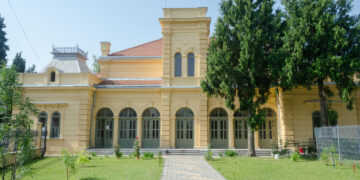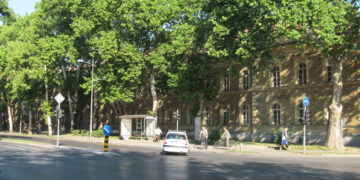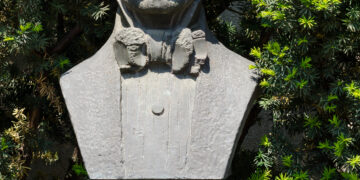In the 19th century, women in Serbia have managed to release of patriarchal discipline with education. In the late 18th century, wealthy families in Vojvodina tended to send their female children to good schools where they would teach foreign languages (German, Hungarian, French), and study politics, philosophy and other sciences that will set them on a strong position in the society. Multiethnic environment asked certain norms and standards that had to be monitored. Woman child has been thought that her place is in the house, that a school is for boys, and that her job is to serve her husband and raising children. At the beginning of the 19th century, such way of life begins questionable.
In the area of Novi Sad were born and lived the first Serbian women whose actions contributed significantly to the cultural and educational development of the whole the Kingdom of Serbia. Among them were: the first Serbian writer of the 19th century Eustahija Arsic, lawyer Marija Milutinovic, feminist Draga Dejanovic, painter Katarina Ivanovic, Katarina Milovuk pedagogue, composer Jovanka Stojkovic, director Milka Markovic, a scientist Mileva Maric Einstein, the first war correspondent Milica Stojadinovic Srpkinja, benefactress Marija Trandafil and many other women responsible for the development of the country.
In Novi Sad, each church community had its own school. Melchior Erdujhelji wrote about that in his book „History of Novi Sad“. There is a written command from 1848, which says that: „In terms of the new arrangement, female children need to be separated from male children – someone needs to form one female school that would be separated from the others.“ He has written fact that 1,862 girls were in the women Serbian schools in Novi Sad. The primary schools and kindergartens started massively to develop through the city at the end of the 19th century.
During the 19th-century Leroy begun to form in cities, as well as in Novi Sad, in which the ladies with a significant reputation teach girls knitting and sewing. Girls’ schools and state women schools were also established in the city, starting from 1826. The first Girls High school was opened in 1871 and allowed the girls to enroll a school for teachers which previously had been provided only for men. However, many of the female students are encouraged from farmers, artisan families, while the richer part of the population, enrolled their daughters in the private Leroy and school in Budapest and Zurich.
The need for the first women’s professional school in the form of educational institutions expressed Dr. Maksimovic, who sought to create a Department of training midwife and maternity so that women can be trained for this kind of work. But his wish was not fulfilled. Only at the beginning of the 20th century were established craft girls’ school set up by the charity organization Serb Novosatkinja (1921), Crafts and trading girls’ school (1925).
In addition, they were able to join basic and vocational secondary education and were involved in various organizations as religious, as a humanitarian. So they jointly worked on the emancipation of women in the city and their female offspring. Were established female feminist movements, charity organizations, religious groups. They were accompanied by the eponymous women’s magazines, newspapers, over which the organization advertised. All with an aim to expand the population striving for gender equality in all spheres of the society.
The first feminists and fighters for national rights in Vojvodina were Milica Stojadinovic Srpkinja, Savka Subotic, Jaroslava Jaros, Katarina Milovuk, Draga Dejanovic. They were public, with full courage, asked questions about the subordinate position of women in civil society and demanded that the other woman drew from that kind of life. Unfortunately, they were all doomed to an early death, placed in front of a big temptation, solitude, and oblivion.




